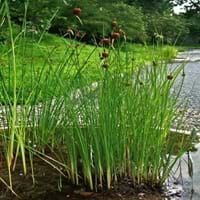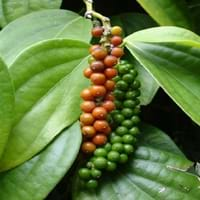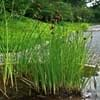Life Span
Perennial
Perennial
Type
Aquatics
Broadleaf Evergreen, Vines
Origin
Eastern Europe, Western Asia
India, Indonesia, Southeast Asia, Southern Asia
Types
Common Cattail, Southern Cattail, Dwarf Bulrush
Red pepper, Orange pepper
Number of Varieties
Not Available
Habitat
Lake margins, Ponds, Swamps
Moist Soils, orchards, Temperate Regions
USDA Hardiness Zone
3-11
8-15
AHS Heat Zone
12-1
12 - 1
Sunset Zone
21,22
H1, H2, 8, 9, 14, 15, 16, 17, 18, 19, 20, 21, 22, 23, 24
Habit
Upright/Erect
Clump-Forming
Minimum Width
Not Available
Flower Color
Yellow, Green, Brown, Chocolate
Lemon yellow
Flower Color Modifier
Not Available
Bicolor
Fruit Color
Light brown, Light Red
Red, Green, Light Green
Leaf Color in Spring
Green, Dark Green
Light Green, Dark Green
Leaf Color in Summer
Green, Dark Green
Light Green
Leaf Color in Fall
Green, Dark Green
Light Green, Dark Green
Leaf Color in Winter
Brown
Light Green, Dark Green
Leaf Shape
Long linear and narrow
Circular cordate
Plant Season
Summer, Fall, Winter
Spring, Summer, Fall, Winter
Sunlight
Full Sun, Partial Sun
Full Sun, Partial Sun, Partial shade
Type of Soil
Clay, Loam, Sand
Loam, Sand
The pH of Soil
Acidic, Neutral
Acidic, Neutral, Alkaline
Soil Drainage
Poorly Drained
Average
Bloom Time
Summer, Late Summer, Early Fall
Not Available
Tolerances
Wet Site
Drought
Where to Plant?
Container, In Water
Container, Ground
How to Plant?
Runners
Seedlings, Stem Planting, Vegetative Reproduction
Plant Maintenance
Low
Medium
Watering Requirements
Plant grows in water
Do Not over Water, Sprinkle water over foliage, Water every two or three days during warmer months
In Summer
Aquatic Plant
Lots of watering
In Spring
Aquatic Plant
Moderate
In Winter
Aquatic Plant
Average Water
Soil pH
Acidic, Neutral
Acidic, Neutral, Alkaline
Soil Type
Clay, Loam, Sand
Loam, Sand
Soil Drainage Capacity
Poorly Drained
Average
Sun Exposure
Full Sun, Partial Sun
Full Sun, Partial Sun, Partial shade
Pruning
Prune in early spring, Remove damaged leaves, Remove dead branches, Remove dead leaves
A hard prune may be necessary if the plant becomes woody, Remove dead branches, Trim each shoot back to the first set of leaves
Fertilizers
Nitrogen, Phosphate
10-10-10 diluted liquid fertilizer, All-Purpose Liquid Fertilizer, Do not let fertilizers touch the leaves
Pests and Diseases
Red blotch
Aphids, Beetles, Root rot, Rust, Scab
Plant Tolerance
Drought
Heat Tolerance, Humidity, Salt and Soil Compaction
Flowers
Showy
Not Available
Flower Petal Number
Single
Single
Foliage Texture
Medium
Medium
Foliage Sheen
Matte
Matte
Attracts
Birds, Flying insects
Aphids, Leafminer, Snails, Squirrels
Allergy
no allergic reactions
Oral Allergy
Aesthetic Uses
Beautification, Showy Purposes, Water gardening
Beautification, Cottage Garden, Decorating walls
Beauty Benefits
Not Available
Acne, Blackheads
Environmental Uses
Food for animals, Food for birds, Food for insects, Nesting sites for birds
Fixes Nitrogen, Insect Repellent
Medicinal Uses
Nutrients
Acid Reflux, Dysentry, Healthy teeth, Inflammation, Oral health
Part of Plant Used
Leaves
Dried seeds
Other Uses
Decoration Purposes, Showy Purposes, Used as Ornamental plant
Culinary use, Oil is used for aromatherapy, Used in herbal medicines
Used As Indoor Plant
Yes
Yes
Used As Outdoor Plant
Yes
Yes
Garden Design
Bog Garden, Container, Water Gardens
Container, Feature Plant, Hedges, Screening / Wind Break, Tropical
Botanical Name
TYPHA minima
Piper nigrum
Common Name
Dwarf Cattail
Peppercorn, Piper, Black pepper
In Hindi
बौना कैटेल
काली मिर्च
In German
Dwarf Rohrkolben
Pfeffer
In French
Cattail nain
Piper nigrum
In Spanish
Espadaña enano
Poivrier noir
In Greek
Νάνος Cattail
μαύρο πιπέρι
In Portuguese
Tifa Dwarf
Pimenta-preta
In Polish
Dwarf Ożypałka
Pieprz czarny
In Latin
Pumilio Cattail
nigrum piperis
Phylum
Tracheophyta
Magnoliophyta
Class
Liliopsida
Magnoliopsida
Family
Typhaceae
Piperaceae
Clade
Angiosperms, Commelinids, Monocots
Angiosperms, Monocots
Tribe
Not Available
Not Available
Subfamily
Not Available
Not Available
Number of Species
Not Available
Not Available
Importance of Dwarf Cattail and Black pepper
Want to have the most appropriate plant for your garden? You might want to know the importance of Dwarf Cattail and Black pepper. Basically, these two plants vary in many aspects. Compare Dwarf Cattail and Black pepper as they differ in many characteristics such as their life, care, benefits, facts, etc. Every gardener must at least have the slightest clue about the plants he wants to plant in his garden. Compare their benefits, which differ in many ways like facts and uses. The medicinal use of Dwarf Cattail is Nutrients whereas of Black pepper is Acid Reflux, Dysentry, Healthy teeth, Inflammation and Oral health. Dwarf Cattail has beauty benefits as follows: Not Available while Black pepper has beauty benefits as follows: Not Available.
Compare Facts of Dwarf Cattail vs Black pepper
How to choose the best garden plant for your garden depending upon its facts? Here garden plant comparison will help you to solve this query. Compare the facts of Dwarf Cattail vs Black pepper and know which one to choose. As garden plants have benefits and other uses, allergy is also a major drawback of plants for some people. Allergic reactions of Dwarf Cattail are no allergic reactions whereas of Black pepper have Oral Allergy respectively. Having a fruit bearing plant in your garden can be a plus point of your garden. Dwarf Cattail has no showy fruits and Black pepper has no showy fruits. Also Dwarf Cattail is not flowering and Black pepper is not flowering . You can compare Dwarf Cattail and Black pepper facts and facts of other plants too.





